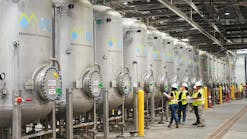Two studies from the University of Córdoba, Spain, explore the effectiveness of biofiltration.
The first study compared the odors from activated sludge process (ASP) and rotating biological contactors (RBC), ultimately finding that both had similar odor emissions.
The second study compared biofiltration’s effectiveness at removing acidic, water-soluble odorous compounds and less soluble compounds. It ultimately found that biofiltration was more effective — but less lasting — at removing the acidic, water-soluble odorous compounds.
The odor emitted by wastewater treatment plants in cities is one of the social problems that technology has been trying to solve for years. The control and management systems of this type of infrastructure have been concerned with minimizing the environmental and odorous impact of this waste, which directly affects quality of life — especially for those who live near treatment plants.
Among the latest systems that biotechnology has devised, there are two that are on the rise: mechanical ventilation and biofiltration. Both were evaluated in two independent studies carried out by two scientific teams at the University of Córdoba, and published in the journal Process Safety and Environmental Protection.
The first of these studies describes the work carried out at real scale at the Wastewater Treatment Plants (WWTP) in two Cordoba towns: Espiel and Villaviciosa; while the second analyzed the operation of pilot-scale biofilters operated at the facilities of the Chemical Engineering area of the University of Córdoba.
The first study found that ASP, a process also known as the extended aeration of activated sludge, which is employed at the WWTP in Espiel, had a similar odor rate to the RBC, or rotating disc system, used in Villaviciosa. However, Espiel had a slightly higher odor rate per inhabitant than Villaviciosa.
It was also found that the aeration system in Espiel is more efficient and intensive for the treatment of wastewater, and generates a greater amount of sludge.
The second study analyzed how effective biofiltration could be in eliminating odors from different organic waste: pruning waste, exclusively, or mixing it with sludge compost from the treatment plant itself.




